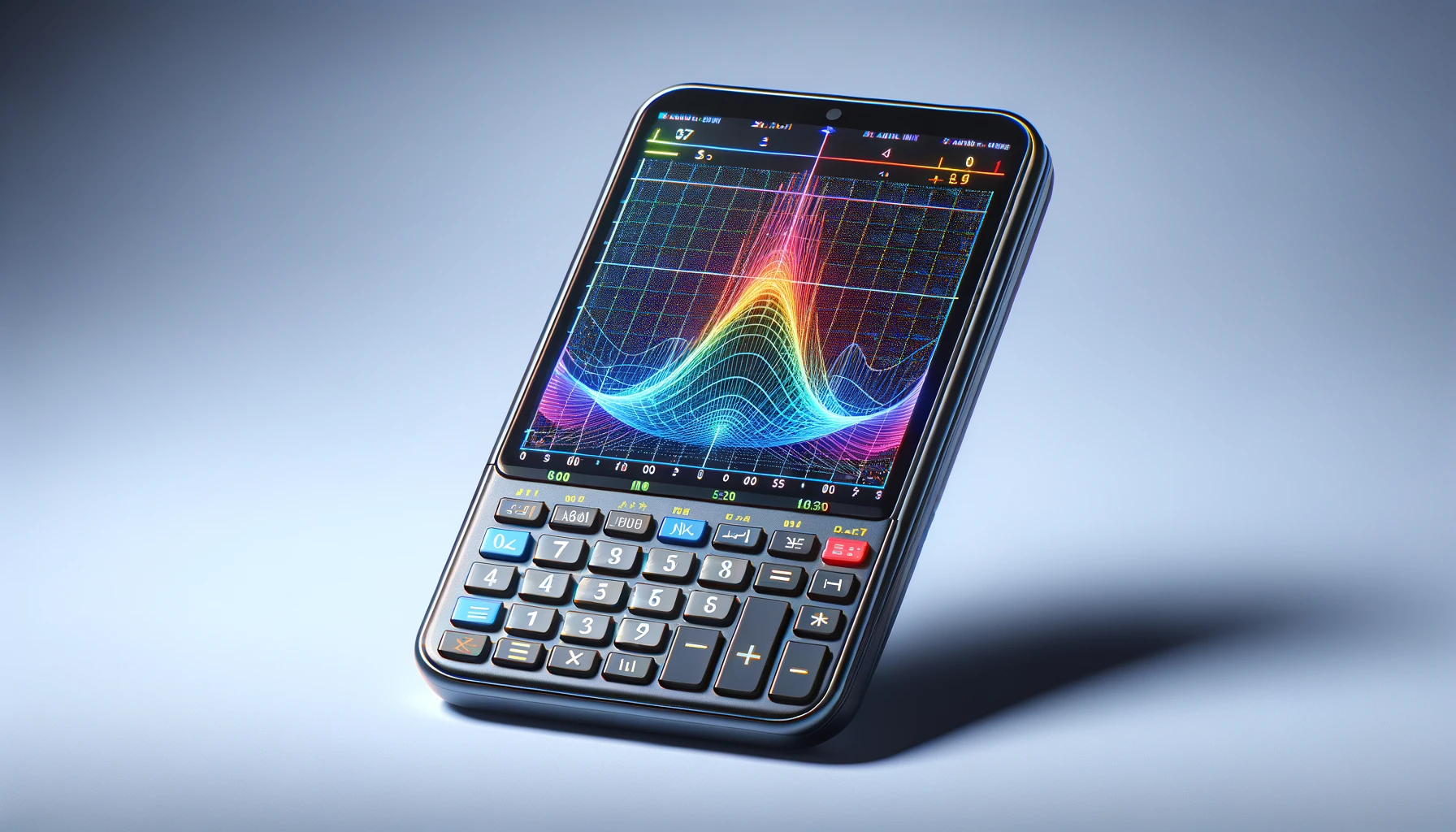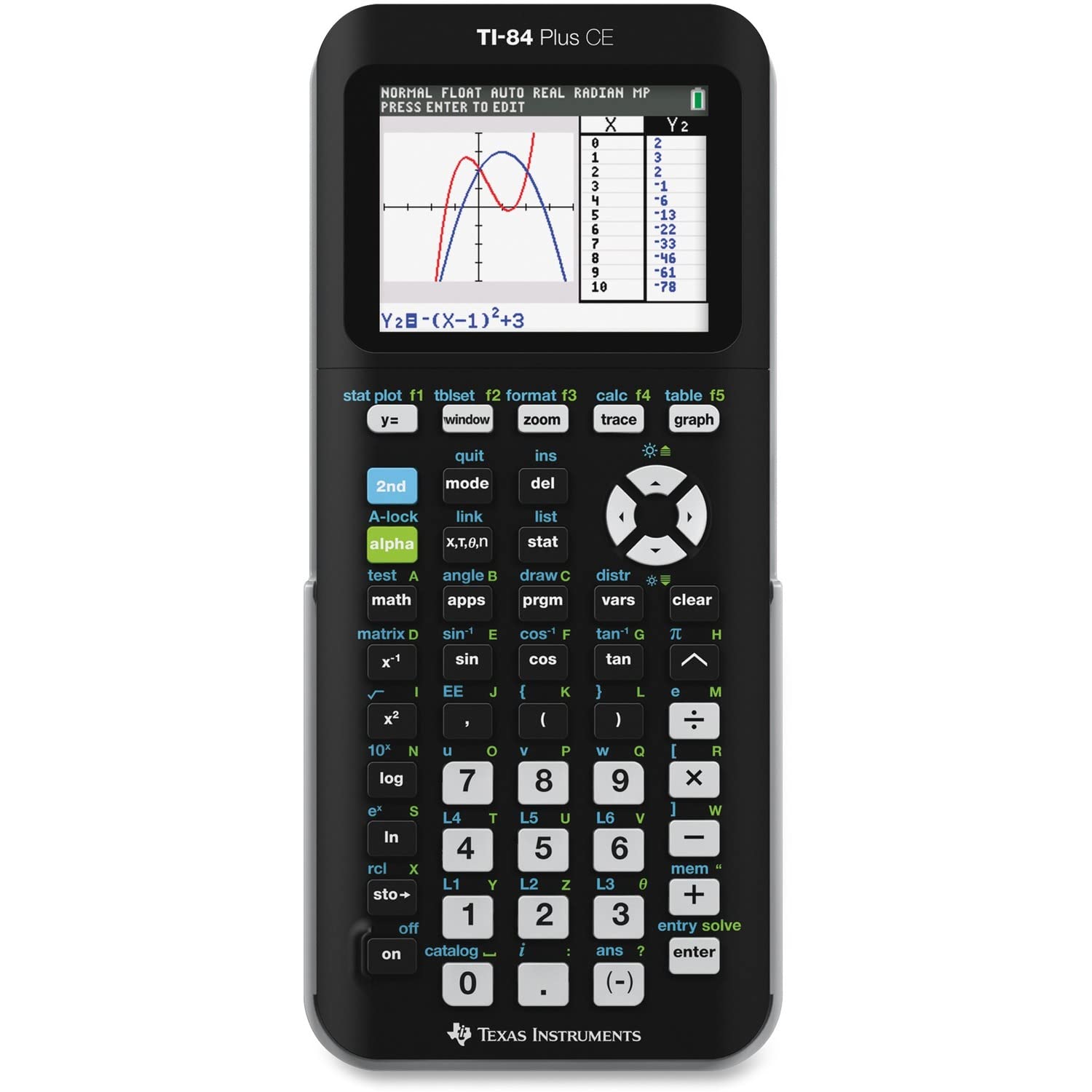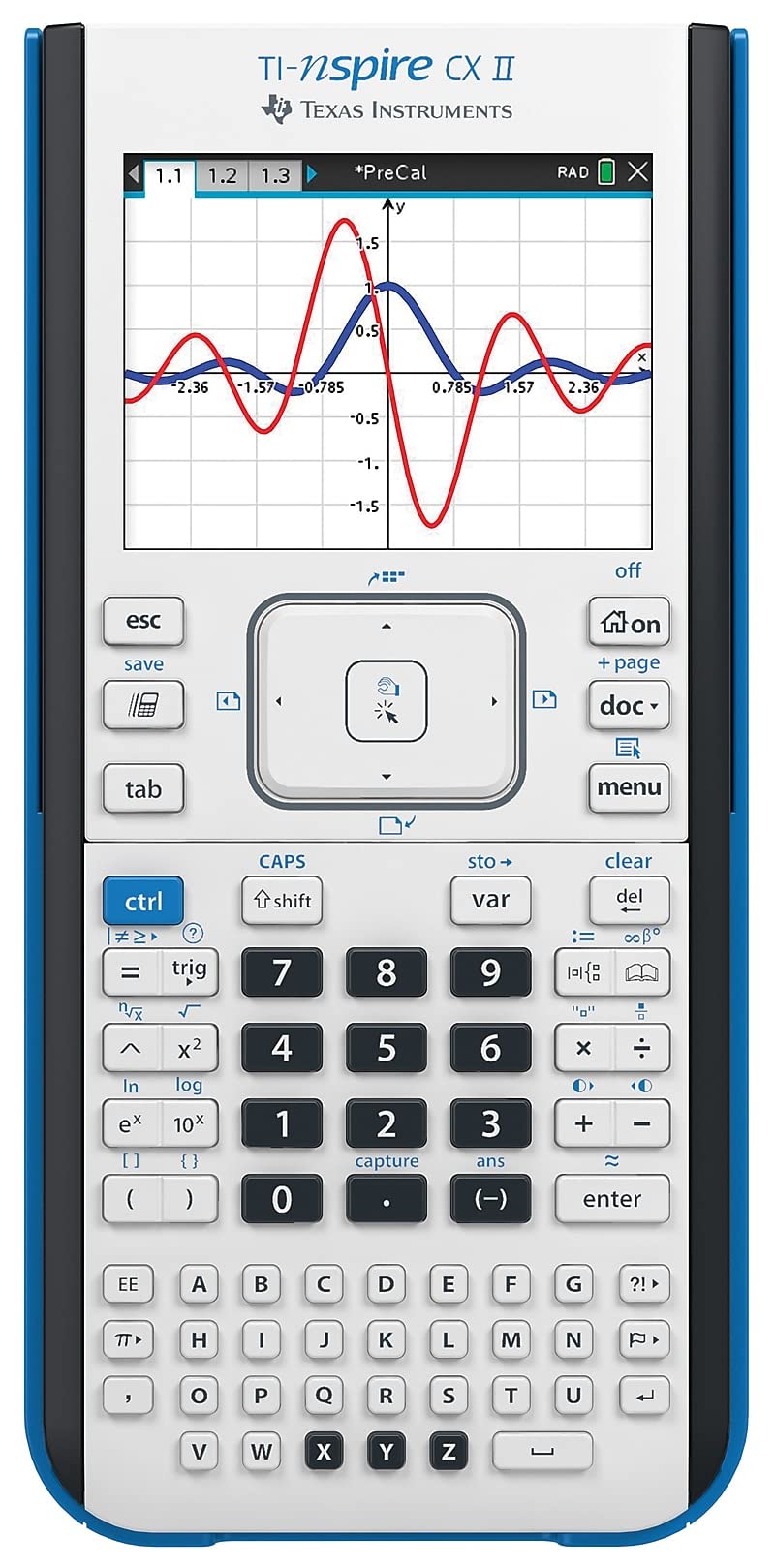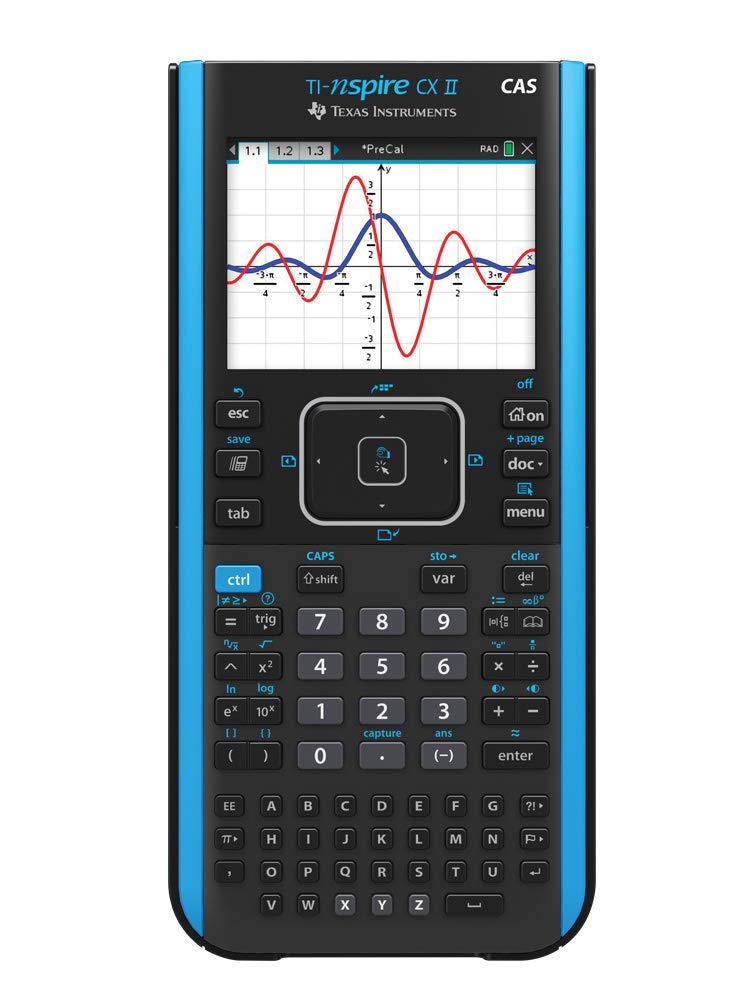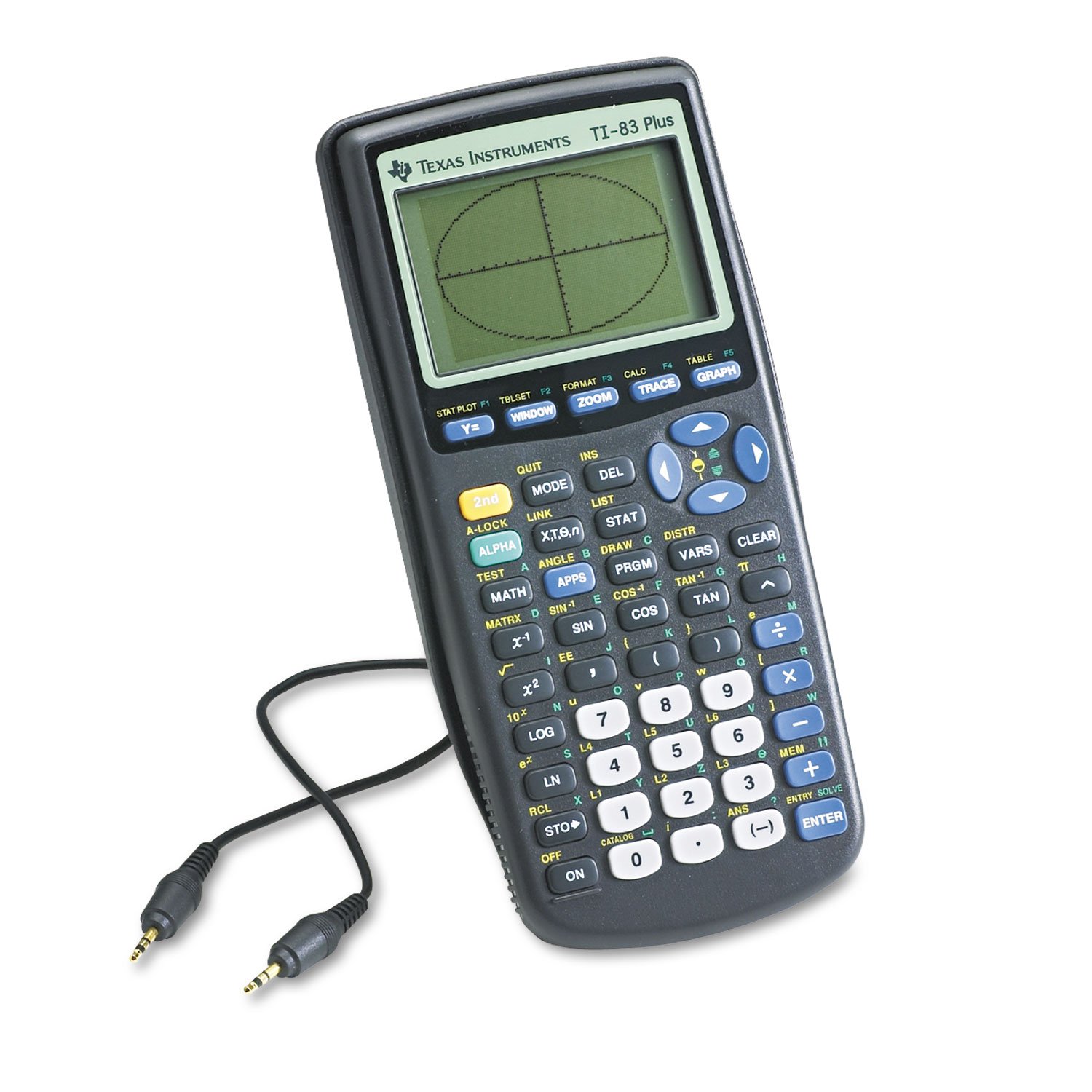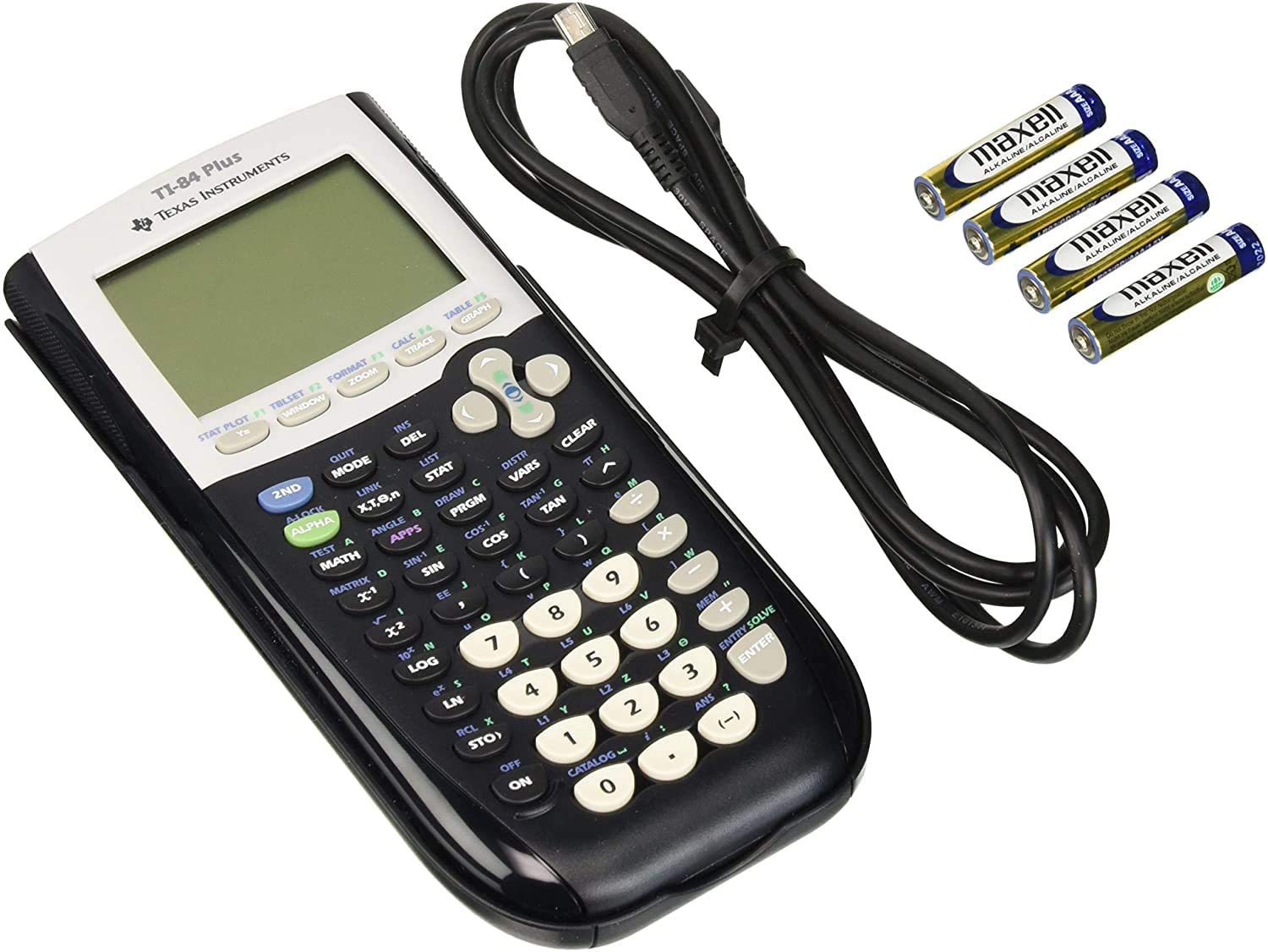Best Graphing Calculators for Students and Professionals
Graphing calculators are essential tools for students, teachers, and professionals alike. They allow for complex computations, graphing, and statistical analysis that cannot be easily accomplished on a traditional calculator or by hand. A good graphing calculator can make all the difference when it comes to understanding and visualizing mathematical concepts.
When it comes to choosing the best graphing calculator, there are several factors to consider. One of the most important things to look at is the calculator’s functionality. This includes the number of functions and operations it can perform, as well as the ease of use of the interface.
Another critical factor is the calculator’s display. A clear, easy-to-read screen is essential for graphing and visualizing data. Additionally, the size and weight of the calculator may be important for those who need to carry it around with them.
We spent hours researching and testing ten different graphing calculators to identify the ones that offer the best combination of functionality, ease of use, and display quality. Whether you’re a high school student just starting to explore the world of graphing calculators or a professional in need of a powerful tool for complex computations, we’ve got you covered.
Best Graphing Calculators
We understand that finding the perfect graphing calculator can be a daunting task. With so many options available in the market, it’s easy to get overwhelmed. That’s why we’ve put together a comprehensive list of the best graphing calculators to help you make an informed decision. We’ve tested and reviewed each calculator on this list to ensure that they meet our high standards for accuracy, reliability, and ease of use. Whether you’re a student, a professional, or someone who loves math, we’ve got you covered. So, without further ado, here are our top picks for the best graphing calculators.
1) Texas Instruments TI-84 Plus CE Color Graphing Calculator
If you’re looking for a reliable and feature-packed graphing calculator, the Texas Instruments TI-84 Plus CE Color Graphing Calculator is definitely worth considering.
Pros
- The high-resolution, full-color backlit display makes it easy to read and navigate through graphs and other data.
- With fourteen interactive zoom features, you can easily zoom in on specific areas of your graphs for better analysis.
- The MathPrint feature is a great addition, allowing you to view math expressions and symbols exactly as they appear in textbooks.
Cons
- It’s a bit on the pricey side compared to other graphing calculators on the market.
- The packaging may vary, and some customers have reported receiving the Python version instead of the regular version.
- While it’s lightweight, it may not be as durable as some other models, so you’ll need to be careful when using it.
We’ve been using the TI-84 Plus CE for a while now, and we’re impressed with its performance. The color display is a nice touch, and it’s especially helpful when working with graphs and charts. The MathPrint feature is also a great addition, as it makes it easier to read and understand complex math expressions.
One thing to keep in mind is that the TI-84 Plus CE is a bit more expensive than some other graphing calculators on the market. However, we think it’s worth the investment if you’re serious about your math studies or work.
Overall, we’d definitely recommend the Texas Instruments TI-84 Plus CE Color Graphing Calculator to anyone looking for a reliable and feature-packed calculator. It’s definitely one of the best options out there, and we think you’ll be pleased with its performance.
2) Texas Instruments TI-Nspire CX II Color Graphing Calculator with Student Software (PC/Mac) White 3.54 x 7.48 White Single Pack Calculator
If you’re a student or a professional who needs a reliable and versatile graphing calculator, the Texas Instruments TI-Nspire CX II is definitely worth considering.
Pros
- The high-resolution, full-color backlit display is a standout feature, making it easy to read and navigate.
- The rechargeable battery included with the calculator can last up to two weeks on a single charge, making it convenient for use on the go.
- The handheld software bundle, which includes the TI-Inspire CX Student Software, delivers enhanced graphing capabilities and other functionality.
Cons
- The calculator’s thin design and lightweight construction may make it feel a bit flimsy or fragile.
- The easy touchpad navigation can take some getting used to, and may not be as intuitive as a traditional button-based interface.
- The calculator’s price point is on the higher end, which may be a drawback for some users.
Overall, we found the Texas Instruments TI-Nspire CX II to be a reliable and versatile graphing calculator that’s well-suited for students and professionals alike.
The calculator’s high-resolution, full-color backlit display is a standout feature, making it easy to read and navigate. We found it particularly helpful when working with complex equations or graphs, as it allowed us to see everything clearly and in great detail.
The rechargeable battery included with the calculator is also a nice touch, as it can last up to two weeks on a single charge. This makes it convenient for use on the go, and eliminates the need for frequent battery replacements.
The handheld software bundle, which includes the TI-Inspire CX Student Software, delivers enhanced graphing capabilities and other functionality. We found this to be particularly helpful when working with more advanced equations or graphs, as it allowed us to easily visualize and manipulate complex data sets.
That being said, there are a few drawbacks to the TI-Nspire CX II that are worth mentioning. The calculator’s thin design and lightweight construction may make it feel a bit flimsy or fragile, which could be a concern for some users.
Additionally, the easy touchpad navigation can take some getting used to, and may not be as intuitive as a traditional button-based interface. This could be a drawback for users who are used to more traditional calculators.
Finally, the calculator’s price point is on the higher end, which may be a drawback for some users. However, we found that the TI-Nspire CX II’s advanced features and functionality more than justify the price tag.
Overall, we would definitely recommend the Texas Instruments TI-Nspire CX II to anyone in need of a reliable and versatile graphing calculator. Its advanced features, high-resolution display, and handheld software bundle make it a standout choice for students and professionals alike.
3) Texas Instruments TI-84 Plus Graphics Calculator
If you’re a student or a professional in need of a graphing calculator, the Texas Instruments TI-84 Plus Graphics Calculator is a great option to consider.
Pros
- The preloaded software includes Cabri Jr. interactive geometry software, which is a great tool for visual learners.
- The calculator can define, save, graph, and analyze up to ten functions at once, which is helpful for complex calculations.
- The advanced functions are easily accessible through pull-down display menus, making it easier to navigate and use.
Cons
- The calculator is on the expensive side, which may not be ideal for those on a budget.
- The user interface can be overwhelming for first-time users, requiring some time to get used to.
- The calculator is battery-powered, which means you’ll need to keep spare batteries on hand.
The Texas Instruments TI-84 Plus Graphics Calculator is a versatile tool that can be used for a variety of math and science applications. It features a vibrant backlit color screen and seven different graph styles to differentiate the look of each graph drawn. Additionally, it has fourteen interactive zoom features that allow you to zoom in and out of graphs with ease.
One of the standout features of this calculator is the I/O port, which allows for communication with other TI products. This can be useful for transferring data or connecting to other devices.
While the calculator may be a bit pricey, it’s a worthwhile investment for those who need a reliable and powerful graphing calculator. With its advanced functions and user-friendly interface, the Texas Instruments TI-84 Plus Graphics Calculator is a solid choice for students and professionals alike.
4) Texas Instruments TI-Nspire CX II CAS Color Graphing Calculator
If you’re looking for a powerful graphing calculator that can handle complex math problems, the Texas Instruments TI-Nspire CX II CAS is a great choice.
Pros
- The color screen makes it easy to read and distinguish between different graphs.
- The rechargeable battery lasts up to two weeks on a single charge, so you don’t have to worry about running out of power unexpectedly.
- The handheld-software bundle includes the TI-Inspire CX Student Software, which delivers enhanced graphing capabilities and other functionality.
Cons
- The cursor navigation can be a bit awkward, which can lead to accidentally clicking on the wrong button.
- The price is on the higher side, which may not be feasible for everyone.
- The learning curve can be steep for those new to graphing calculators.
This calculator is packed with features that make it a great tool for students and professionals alike. The built-in Computer Algebra System (CAS) engine enables students to perform symbolic as well as numeric calculations, and the integrated mathematics templates permit you to enter expressions and see math symbols, formulas, and stacked fractions just as they are printed in textbooks and on the board.
One of the standout features of this calculator is the animated path plot, which allows you to easily visualize function, parametric, and polar graphs as they’re drawn in real time. The dynamic coefficient values let you explore direct connections between dynamic coefficients in equations and graphs.
The thin design and lightweight with easy touchpad navigation makes it easy to carry around and use on the go. The quick alpha keys and six different graph styles and 15 colors to select from for differentiating the look of each graph drawn make it easy to input and visualize complex equations.
Overall, if you’re looking for a powerful graphing calculator that can handle complex math problems, the Texas Instruments TI-Nspire CX II CAS is definitely worth considering.
5) Texas Instruments TI-89 Titanium Graphing Calculator
If you need a graphing calculator that can handle calculus, algebra, matrices, and statistical functions, then the Texas Instruments TI-89 Titanium Graphing Calculator is a great option to consider.
Pros
- With 188 KB RAM and 2.7 MB flash memory, this calculator is lightning fast and has plenty of storage for functions, programs, and data.
- The large 100 x 160 pixel display allows for split-screen views, making it easy to see multiple calculations at once.
- This calculator is compatible with a variety of systems, including the CBL 2 system, CBR 2 motion sensor, vernier easylink, and vernier easytemp systems, which allow for the collection and analysis of real-world data.
Cons
- The TI-89 Titanium Graphing Calculator is on the pricier side compared to other graphing calculators on the market.
- Some users may find the interface to be a bit complicated at first, especially if they are not familiar with Texas Instruments calculators.
- While the calculator is compatible with USB on-the-go technology for file sharing with other calculators and connecting with PCs, some users may prefer a calculator that has built-in WiFi or Bluetooth connectivity.
We recently had the opportunity to use the Texas Instruments TI-89 Titanium Graphing Calculator, and we were impressed with its speed and versatility. The calculator was able to handle complex calculations with ease, and we appreciated the large display, which made it easy to see our work.
One thing to note is that the interface can be a bit overwhelming at first, especially if you are not used to Texas Instruments calculators. However, with a bit of practice, we were able to navigate the menus and functions with ease.
Overall, if you are looking for a powerful graphing calculator that can handle a wide range of functions, the Texas Instruments TI-89 Titanium Graphing Calculator is definitely worth considering. While it may be on the pricier side, its speed and versatility make it a great investment for students, engineers, and anyone else who needs a reliable calculator for complex calculations.
6) Texas Instruments TI-83 Plus Graphing Calculator
If you’re looking for a reliable graphing calculator that can be used for standardized tests, the Texas Instruments TI-83 Plus Graphing Calculator is a great option.
Pros
- Permitted for use on SAT, PSAT/NMSQT, ACT, AP, IB and Praxis exams
- Offers large 64 x 96 pixel, 8 x 16 display; 24KB of RAM; and 160KB Flash ROM memory
- Enhanced data analysis (logistic and sine regressions); offers I/O port with unit-to-unit link cable
Cons
- Screen size is only 3.5 inches
- Requires 4 AAA batteries (included) and a lithium battery backup to protect RAM memory
- Not as advanced as some other graphing calculators on the market
We found that the TI-83 Plus was easy to use and reliable, making it a great choice for students who need a calculator for standardized tests. The calculator also offers a variety of functions, including graphing, data analysis, and complex numbers.
One downside to the calculator is that the screen size is only 3.5 inches, which can make it difficult to view graphs and other data. Additionally, the calculator requires 4 AAA batteries (included) and a lithium battery backup to protect RAM memory, which can be inconvenient for some users.
Overall, we would recommend the Texas Instruments TI-83 Plus Graphing Calculator for students who need a reliable calculator for standardized tests. While it may not be as advanced as some other graphing calculators on the market, it offers a variety of useful functions and is easy to use.
7) Texas Instruments TI-84 Plus Graphing Calculator
If you’re looking for a powerful and reliable graphing calculator for your math and science needs, the Texas Instruments TI-84 Plus is a great choice.
Pros
- The TI-84 Plus is an all-purpose graphing calculator that can handle pre-algebra, algebra 1 and 2, geometry, statistics, biology, physics, business, and finance.
- With 12 pre-loaded apps and support for all TI-83 apps, this calculator is a powerful problem-solving tool for storing, graphing, and analyzing up to 10 functions.
- The calculator’s split-screen feature lets you view a graph and its equation at the same time, making it easier to analyze data and perform calculations.
Cons
- The TI-84 Plus is a bit on the expensive side, so it may not be the best choice if you’re on a tight budget.
- While the calculator is easy to use once you get the hang of it, it can be a bit overwhelming for first-time users.
- The calculator’s screen can be a bit small for some users, which may make it harder to read and analyze data.
If you’re looking for a powerful and versatile graphing calculator that can handle a wide range of math and science tasks, the Texas Instruments TI-84 Plus is definitely worth considering. With its pre-loaded apps, split-screen feature, and support for all TI-83 apps, this calculator is a great choice for students and professionals alike.
The TI-84 Plus is also very easy to use once you get the hang of it. The calculator’s buttons are well-labeled and easy to understand, and the menus are intuitive and easy to navigate.
One thing to keep in mind, however, is that the TI-84 Plus can be a bit expensive compared to other graphing calculators on the market. If you’re on a tight budget, you may want to consider a more affordable option.
Overall, we highly recommend the Texas Instruments TI-84 Plus for anyone in need of a powerful and reliable graphing calculator.
Buying Guide
When choosing the best graphing calculator, there are several factors to consider. We recommend taking the following into account before making a purchase:
Features
Consider the features you need for your intended use. Do you need a calculator that can handle complex calculations or one that can display graphs and charts? Look for a calculator that has the features you need to make your work easier and more efficient.
Display
The display is an important factor to consider when choosing a graphing calculator. Look for a calculator with a clear and easy-to-read display. A color display can also be helpful in distinguishing between different functions and variables.
Memory
The amount of memory a calculator has is important, especially if you plan on storing and working with large amounts of data. Look for a calculator with enough memory to handle your needs.
Battery Life
Battery life is an important consideration when choosing a graphing calculator. Look for a calculator with a long battery life or one that can be easily recharged.
Durability
Look for a calculator that is durable and can withstand regular use. Consider the material and construction of the calculator to ensure it can handle everyday wear and tear.
In summary, when choosing the best graphing calculator, consider the features, display, memory, battery life, and durability. By taking these factors into account, you can find a calculator that meets your needs and helps you perform your work more efficiently.
Frequently Asked Questions
What are the top features to look for in a graphing calculator for college students?
When it comes to graphing calculators for college students, there are a few key features to look for. Firstly, a large display screen is crucial for displaying complex mathematical equations and graphs. Secondly, a calculator with a high processing speed and memory capacity is essential for handling complex calculations and storing data. Other important features include the ability to connect to a computer or other devices, compatibility with various software programs, and a long battery life.
How do the most advanced graphing calculators compare in terms of performance and functionality?
The most advanced graphing calculators on the market offer a wide range of features and functionality. These calculators typically have high processing speeds, large displays, and extensive memory capacity. They also often come equipped with advanced software and programming capabilities, allowing users to create and run complex programs. Some of the most advanced graphing calculators on the market include the TI-Nspire CX II, the HP Prime, and the Casio fx-CG500.
What makes a graphing calculator ideal for engineering students?
8) Engineering students require a graphing calculator that can handle complex calculations and equations. A calculator with advanced mathematical functions, such as calculus and linear algebra, is essential. Additionally, a calculator with a large display screen and the ability to graph multiple equations simultaneously is important for visualizing complex data. The HP 50g and the TI-89 Titanium are popular choices among engineering students.
Which graphing calculator models are recommended for high school and calculus courses?
For high school and calculus courses, a graphing calculator with basic functionality is often sufficient. The TI-84 Plus and the Casio fx-9750GII are popular choices for high school students. These calculators offer basic graphing and mathematical functions, as well as the ability to store and recall data. For calculus courses, the TI-89 Titanium and the HP 50g are recommended for their advanced mathematical functions.
What are the benefits of using a graphing calculator app over a traditional handheld device?
Using a graphing calculator app on a smartphone or tablet offers several benefits over a traditional handheld device. Firstly, it eliminates the need to carry around a separate device, as most people already have a smartphone or tablet with them. Secondly, graphing calculator apps are often more affordable than traditional handheld devices. Finally, many graphing calculator apps offer additional features and functionality, such as the ability to share data with other apps or to access online resources.
How do HP graphing calculators stand out from other brands in terms of features and usability?
HP graphing calculators are known for their advanced features and usability. They offer extensive programming capabilities, allowing users to create and run complex programs. Additionally, HP calculators often have larger display screens and more intuitive interfaces than other brands. Some popular HP graphing calculators include the HP Prime and the HP 50g.

